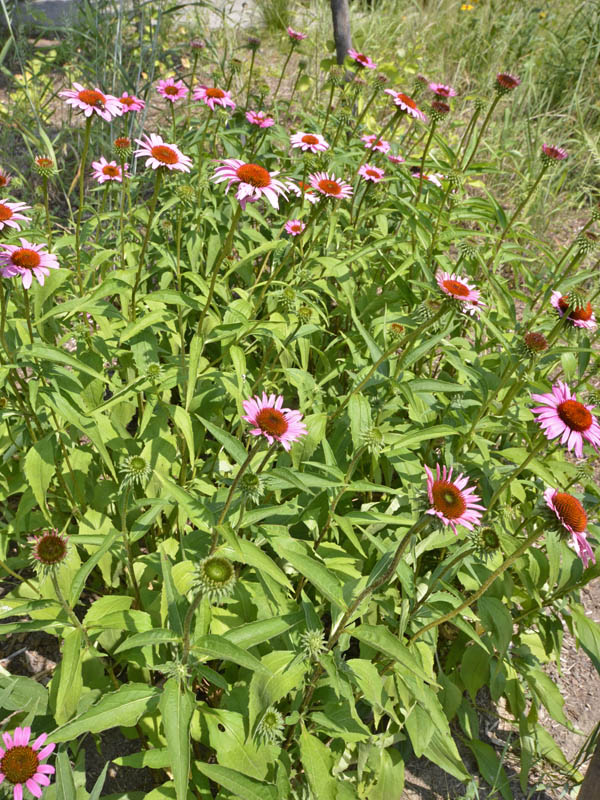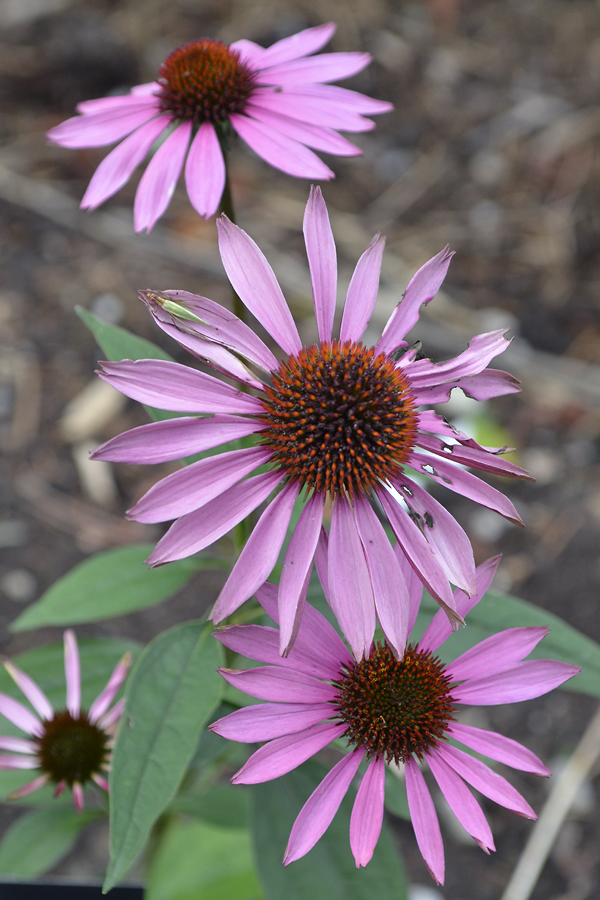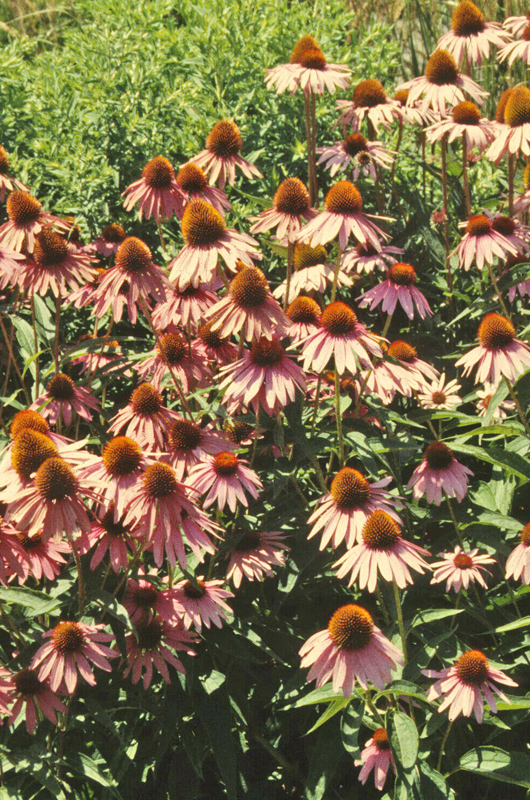| General Description | Echinacea purpurea or Purple Coneflower is a rhizomatous herbaceous perennial with daisy-like, red-purple flowers. |
| Landscape | Plant in large groupings in a naturalized butterfly garden or herbaceous border. The purple flowers are excellent for cutting, drying or left to provide winter interest. Commonly paired with Black-Eyed Susans, creating a nice contrast in colour and form. |
| Propagation | From seed sown outdoors in autumn or in winter in vented containers kept in a cold frame or unheated greenhouse. Seeds should be stratified if sowing indoors. Propagation also by division of the rootball. |
| Cultivation | Easy to grow in full sun to part shade, in average, well-drained soil. Water regularly but do not overwater. Best flowering in full sun. Tolerant of drought, clay or shallow rocky soils, heat, humidity and deer. Self-seeds freely; deadhead if you do not want seedlings the following season. Divide clumps when overcrowding occurs. |
| Pests | Possible problems include: Japanese beetle and leaf spot. |
| Notable Specimens | The A. M. Cuddy Gardens, Strathroy, Ontario, Canada. |
| Habitat | Moist prairies and open woodlands. |
| Leaf Description | Mostly basal leaves up to 15 ⨉ 10 cm, dark green, ovate-lanceolate. Leaves on the stem are tapered to the base, denticulate, sometimes entire. |
| Flower Description | Red-purple ray florets 3 - 8 cm in diameter, drooping slightly. Prominent central cone of orange disc florets. Attract birds and butterflies. |
| Fruit Description | Cypsela, a dry fruit formed from a double ovary, of which only one develops into a single seed. |


